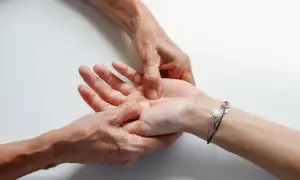Unlock the Secrets of Fine Low Porosity Hair: Nourish and Revitalize Your Thin Locks

- Understanding the characteristics of fine low porosity hair
- Challenges faced by individuals with fine low porosity hair
- Importance of proper hair care routine for fine low porosity hair
- Tips for moisturizing and nourishing fine low porosity hair
- Recommended products for fine low porosity hair
- Styling techniques for fine low porosity hair
- Common mistakes to avoid for individuals with fine low porosity hair
Introduction to Fine Low Porosity Hair
Fine low porosity hair refers to a specific hair type that is characterized by its thin strands and the ability to retain moisture. This type of hair has tightly closed cuticles, which makes it difficult for moisture and products to penetrate the hair shaft. As a result, individuals with fine low porosity hair often face unique challenges when it comes to maintaining healthy and hydrated locks. Understanding the characteristics and needs of this hair type is essential in order to develop an effective hair care routine that will nourish and revitalize fine low porosity hair.
Understanding the characteristics of fine low porosity hair
Understanding the characteristics of fine low porosity hair is essential for proper care and maintenance. Fine low porosity hair refers to hair strands that are thin in diameter and have a tightly closed cuticle layer, making it difficult for moisture to penetrate. This type of hair tends to repel water and products, leading to dryness and a lack of elasticity. It also has a tendency to become easily weighed down by heavy products, resulting in limpness and loss of volume. Additionally, fine low porosity hair is prone to product build-up, as the cuticles do not easily open up to allow for effective cleansing. By understanding these characteristics, individuals with fine low porosity hair can tailor their hair care routine to address its unique needs.
Challenges faced by individuals with fine low porosity hair
Individuals with fine low porosity hair face unique challenges when it comes to maintaining healthy and vibrant locks. One of the main difficulties is the limited ability of moisture to penetrate the hair shaft. This can lead to dryness, frizz, and lack of volume. Additionally, product buildup tends to occur more easily on low porosity hair, making it harder for nutrients and moisture to be absorbed. The lack of natural oils also makes fine low porosity hair more prone to breakage and damage from heat styling tools. Overall, these challenges require a specialized approach to hair care in order to nourish and revitalize thin locks effectively.
Importance of proper hair care routine for fine low porosity hair
Proper hair care routine is crucial for individuals with fine low porosity hair. Due to its unique characteristics, this hair type requires special attention and care. A consistent routine helps in maintaining the health and vitality of fine low porosity hair. It prevents dryness, breakage, and damage caused by external factors. Regular cleansing, conditioning, and moisturizing are essential to keep the hair hydrated and nourished. Additionally, incorporating deep conditioning treatments and avoiding heat styling tools can further enhance the overall health of fine low porosity hair. By establishing a dedicated hair care routine, individuals can unlock the secrets to beautiful and revitalized locks.
Tips for moisturizing and nourishing fine low porosity hair
1. Use lightweight, water-based products: Fine low porosity hair tends to get easily weighed down by heavy products. Opt for lightweight, water-based moisturizers and leave-in conditioners that can penetrate the hair shaft without causing buildup.
2. Pre-poo with warm water or steam: Before shampooing, try pre-pooing your hair with warm water or steam. This helps to open up the cuticles and allow moisture to penetrate more effectively.
3. Deep condition regularly: Deep conditioning is crucial for maintaining moisture in fine low porosity hair. Look for deep conditioners that contain ingredients like glycerin, aloe vera, or honey which help attract and retain moisture.
4. Use the LOC method: The LOC (liquid, oil, cream) method is an effective way to lock in moisture for low porosity hair. Start with a liquid leave-in conditioner, follow with a lightweight oil like argan or jojoba oil, and finish with a cream or butter-based moisturizer.
5. Avoid excessive heat styling: Heat can further dry out fine low porosity hair. Minimize heat styling and opt for air-drying whenever possible. If you do use heat tools, always apply a heat protectant spray beforehand.
6. Incorporate regular scalp massages: Massaging your scalp stimulates blood flow and promotes healthy hair growth. Use your fingertips to gently massage your scalp in circular motions while applying a light oil or serum.
Remember that consistency is key when it comes to moisturizing and nourishing fine low porosity hair. Experiment with different products and techniques to find what works best for your unique hair type.
Recommended products for fine low porosity hair
When it comes to caring for fine low porosity hair, using the right products is crucial. Look for lightweight, water-based moisturizers that can penetrate the hair shaft easily. Avoid heavy oils and butters that can weigh down your locks. Opt for products that contain humectants like glycerin or aloe vera, as they help attract moisture to your hair. Clarifying shampoos are also beneficial for removing product buildup without stripping away natural oils. Additionally, deep conditioning treatments with protein-rich ingredients like keratin or silk can help strengthen and nourish your hair. Experiment with different brands and formulations to find what works best for your unique hair type. Remember, consistency is key in maintaining healthy and vibrant fine low porosity hair.
Styling techniques for fine low porosity hair
Styling fine low porosity hair can be a challenge, but with the right techniques, you can achieve beautiful and long-lasting styles. Here are some tips to help you style your fine low porosity hair:
1. Start with clean and moisturized hair: Use a gentle shampoo and conditioner specifically formulated for low porosity hair. This will help to remove any product buildup and provide much-needed moisture.
2. Use lightweight styling products: Heavy products can weigh down fine hair, so opt for lightweight gels or mousses that won't leave your hair feeling greasy or weighed down.
3. Apply products evenly: Work the styling products through your hair evenly, making sure to distribute them from root to tip. This will ensure that your style holds well throughout the day.
4. Avoid excessive heat: Fine low porosity hair is more prone to damage from heat styling tools, so try to limit their use. If you do use heat, always apply a heat protectant spray beforehand and use lower heat settings.
5. Opt for hairstyles that add volume: Fine low porosity hair tends to lack volume, so choose hairstyles that add body and fullness. Try teasing the roots or using volumizing sprays or powders to create lift at the crown.
6. Embrace natural textures: Instead of constantly trying to manipulate your hair into different styles, embrace its natural texture. Enhance your curls or waves with a curl-enhancing cream or mousse for a more effortless look.
Remember, finding the right styling techniques may require some trial and error as everyone's hair is unique. Experiment with different methods and products until you find what works best for your fine low porosity locks.
Common mistakes to avoid for individuals with fine low porosity hair
1. Overloading with heavy products: Using heavy oils or butters can weigh down fine low porosity hair, making it appear greasy and flat. Opt for lightweight, water-based products that can penetrate the hair shaft without leaving a residue.
2. Skipping regular deep conditioning: Fine low porosity hair tends to be more prone to dryness and breakage. It is crucial to incorporate deep conditioning treatments into your routine at least once a week to provide much-needed moisture and nourishment.
3. Using heat styling tools excessively: Excessive use of heat styling tools like flat irons and curling wands can cause damage to fine low porosity hair. Limit the use of these tools and always apply a heat protectant before styling.
4. Neglecting regular trims: Fine low porosity hair is more susceptible to split ends and breakage. Regular trims every 6-8 weeks help maintain healthy ends, preventing further damage and promoting overall hair growth.
5. Ignoring pH balance: Many hair care products contain harsh chemicals that disrupt the natural pH balance of fine low porosity hair, leading to dryness and frizz. Look for pH-balanced products specifically formulated for this hair type.
6. Rough towel drying: Vigorous towel drying can cause friction and breakage in fine low porosity hair. Instead, gently squeeze out excess water using a microfiber towel or an old t-shirt to minimize damage.
By avoiding these common mistakes, individuals with fine low porosity hair can ensure their locks remain healthy, hydrated, and full of life.
In conclusion, understanding and embracing the unique characteristics of fine low porosity hair is essential for maintaining its health and beauty. By following a proper hair care routine and using suitable products, individuals with this hair type can nourish and revitalize their thin locks.
Moisturizing is key for fine low porosity hair, as it tends to retain moisture less effectively. Using lightweight, water-based products and incorporating deep conditioning treatments can help maintain optimal hydration levels.
Additionally, avoiding heavy oils and butters that can weigh down the hair is crucial. Instead, opt for lightweight oils like argan or jojoba oil to provide nourishment without leaving a greasy residue.
Styling techniques such as air-drying or using diffusers on low heat settings can prevent damage caused by excessive heat styling. It's also important to avoid over-manipulation of the hair to prevent breakage.
Lastly, individuals with fine low porosity hair should be mindful of common mistakes such as over-washing or using harsh shampoos that strip away natural oils. Instead, opt for gentle cleansers and limit washing to every few days to maintain the hair's natural moisture balance.
By embracing the uniqueness of fine low porosity hair and adopting a tailored care routine, individuals can unlock the secrets to healthy, vibrant locks. With patience and consistency, anyone can achieve gorgeous results while nourishing their thin strands from within.
Published: 12. 02. 2024
Category: Health



